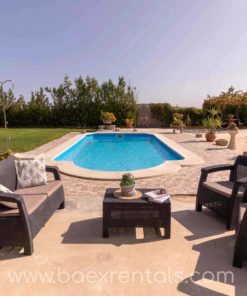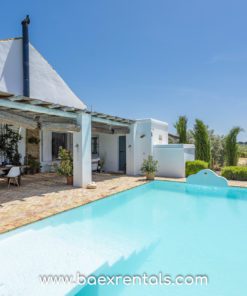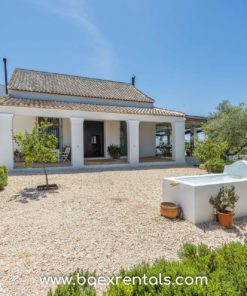Discover the Roman heritage in the Seville countryside
If you’re looking for a unique getaway in the Seville countryside, why not combine rural charm with a fascinating journey through Roman history? Seville countryside not only offers tranquillity and nature, but it is also home to vestiges of ancient Roman civilisation, which you can explore through routes, archaeological sites and museums. Discover how the Romans left their mark on Andalusia and plan an unforgettable visit from your rural accommodation.
The Roman Baetica Route: A Journey through Time
The Roman Baetica Route is one of the most interesting cultural routes in Andalusia, and it is ideal for history lovers. This itinerary connects important Roman cities such as Italica, Carmona and Ecija, allowing you to discover monuments, mosaics, amphitheatres and much more.
As you travel along the Baetica Route, you will enjoy not only the history but also the gastronomy, the wines and the local culture, all while staying in our comfortable holiday homes in the countryside of Seville. Make your visit a complete experience!
Roman sites in Seville and its surroundings
Italica (Santiponce)

The Roman city of Italica, located in Santiponce, just 9 km from Seville, is one of the most important Roman archaeological sites in Spain and a compulsory city for history lovers. Founded in 206 B.C. by the Roman general Publius Cornelius Scipio ‘The African’, Italica is known for being the birthplace of the emperors Trajan and Adriano, two of the most influential figures in the history of the Roman Empire.
History of Italica: The Heart of Roman Baetica


Italica was the first Roman city established outside Italy, which underlines its importance in the context of Roman Hispania. During the Imperial period, Italica experienced an extraordinary boom, becoming a key cultural, political and economic centre in the Baetica province. Its urban layout, with wide streets, stately houses and thermal complexes, reflected the city’s power and prosperity.
What to see at the Italica archaeological site


The Italica archaeological site is famous for its impressive amphitheatre, one of the largest in the Empire, with a capacity for 25,000 spectators. This amphitheatre hosted gladiator fights and public spectacles, being a symbol of the greatness of the city.
Among the ruins of Italica, also highlight the mosaics that adorned the villas of the Roman elite, such as the Mosaic of Neptune or the Mosaic of the Birds, which offer a window into the art and culture of the time. You can also stroll around the thermal baths and the walls, which tell the story of daily life in this ancient city.
Italica is an ideal destination for an excursion, and if you stay in our holiday homes in the Seville countryside, you will be just a short drive away from this impressive testimony to the Roman past.
Carmona


Carmona is another highlight of the Roman Baetica Route. Visit the Roman Necropolis of Carmona, one of the best-preserved cemeteries on the peninsula, and discover how the Romans lived and died in this region. Don’t miss the Roman Amphitheatre and the ancient walls that protected the city.
Écija
Écija, known in Roman times as Astigi, is one of the cities with the greatest Roman legacy in Seville Province. Located in the heart of the Roman Baetica Route, Écija was an important commercial and administrative centre during the Imperial period. Its rich history is reflected in the numerous archaeological finds that can be visited today.
Roman archaeological sites in Écija
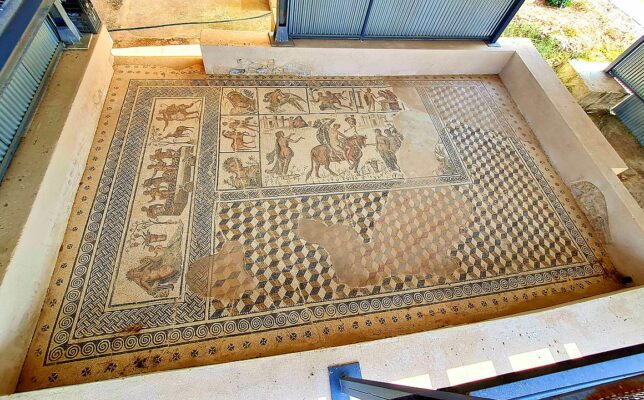

Mosaico de los Amores of Écija, in the Roman archaeological site Plaza de Armas – Baex Rentals
The main Roman site in Écija is the Roman archaeological site of Plaza de España, where mosaics, baths and sculptures have been discovered that reveal the grandeur of this ancient city. Particularly noteworthy is the Wounded Amazon, a sculpture of great artistic value that is one of the symbols of Ecija’s Roman past. This site is a must for lovers of history and archaeology.
Museo Histórico Municipal de Écija
To delve into the Roman legacy of Écija, the Municipal Historical Museum is an unmissable visit. The most important finds from the site are on display here, including mosaics, ceramics and sculptures that tell the story of daily life in Astigi during Roman times. The museum offers an enriching cultural experience for those wishing to learn more about the history of this city.
Roman Heritage and Culture in Écija
In addition to the archaeological sites, Ecija preserves other vestiges of its Roman past, such as parts of the wall that surrounded the city and underground structures. Strolling through its streets, you will feel the presence of ancient Rome in every corner, making Ecija an ideal destination for those looking for a trip back in time.
La Luisiana
In the Sevillian Countryside, La Luisiana is a lesser-known place but full of history. Discover the ancient Roman villas in the surrounding area, and witness the agricultural importance of this region during Roman times. Visit the Roman baths and the famous Fuente de los Borricos.
Casariche
Casariche stands out for its Cerro Bellido Roman quarries, the archaeological site of El Alcaparral, home to the famous ‘Mosaico de los Amores’. This mosaic is a masterpiece of Roman art and reveals the cultural wealth of the area during the Empire.
Gilena


If you are a lover of history and are planning a rural getaway in the Seville countryside, you cannot miss a visit to the Castra Legionis in Gilena, a fascinating Roman site that reveals the military importance of ancient Rome in the region. This enclave, located in the small municipality of Gilena, a few kilometres from Seville, is one of the most interesting examples of Roman fortifications in Andalusia.
History of the Castra Legionis in Gilena
The Castra Legionis was a Roman military fortress that served as a camp for the Roman legions during military campaigns in the province of Baetica. This type of fortified settlement was essential to maintain control over the territory and ensure the passage of Roman troops through the region.
Gilena, known in Roman times as Ilipa Magna, was a strategic place due to its location on the road that connected important Roman cities such as Italica and Astigi (Écija). The camp housed soldiers and officers and was designed to resist attack and protect the Empire’s interests in the area.
Archaeological Site and Findings
The site of Castra Legionis in Gilena has revealed important archaeological finds, including the remains of walls, military buildings and various objects showing the daily life of Roman soldiers. Among the most outstanding discoveries are pieces of pottery, coins, tools and weapons, which offer a detailed insight into the role of this fortress in the defence and control of the territory.
The experts have identified structures that correspond to the barracks where the soldiers were housed, as well as spaces dedicated to military logistics, which underline the strategic importance of Gilena in the network of Roman fortifications in Baetica.
Museum of Gilena
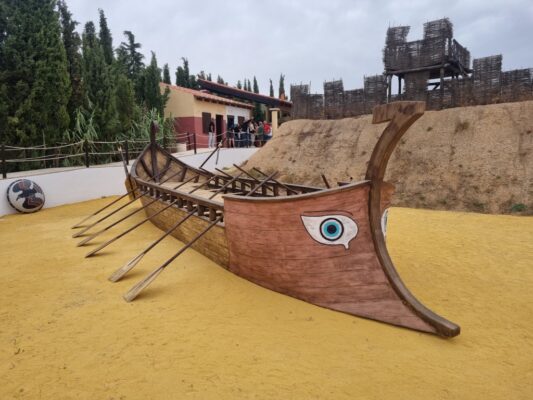

Seville
The city of Seville, known in Roman times as Híspalis, was one of the main Roman settlements in the province of Baetica. Strategically located on the banks of the Guadalquivir River, Seville became an important commercial and administrative centre of the Roman Empire. Although much of its Roman legacy has been overlaid by centuries of later history, you can still find remains that tell of its glorious past.
Roman Archaeological Sites in Seville
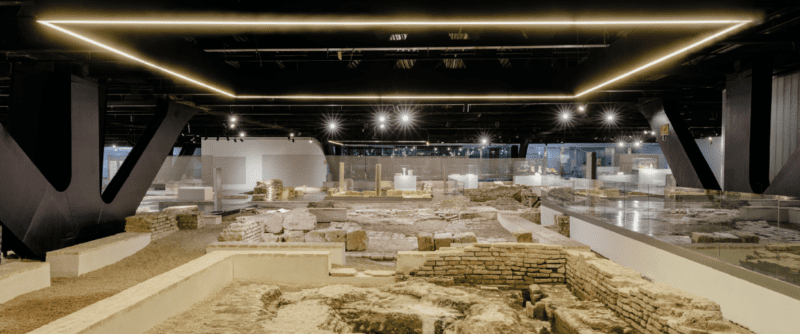

One of the main Roman sites you can visit in the city is the Antiquarium of Seville, located under the famous Metropol Parasol or ‘Seville Mushrooms’. This archaeological site houses the remains of Roman houses, mosaics and other objects that show what life was like in Híspalis during the imperial era. It is a must-see for those who wish to explore Seville’s Roman history in the heart of the city.
In addition, in the Encarnación neighbourhood, important Roman remains have been discovered, such as the remains of walls and buildings that show the importance of Seville during Roman rule.
Archaeological Museum of Seville


To delve deeper into Seville’s Roman legacy, the Archaeological Museum of Seville is an essential stop. Located in the Plaza de América, in the María Luisa Park, this museum houses one of the most complete collections of Roman artefacts in Spain. Here you can admire pieces from Italica, such as the statue of Trajan and the Venus of Italica, as well as mosaics, inscriptions and everyday objects that reveal life in and around Hispalis.
The museum is ideal for those seeking an enriching cultural experience in Seville, exploring history from prehistoric times to Roman times and beyond.
The aqueduct of Seville and other vestiges


Although less visible today, Seville also had an important Roman aqueduct that brought water from the nearby springs of Los Caños de Carmona. Part of this aqueduct was preserved until the 20th century, and although little remains of it today, it is a testament to the advanced Roman ingenuity in the management of water resources.
It is also interesting to mention that during the excavations to build the Seville Metro, more Roman remains were found, such as pottery and structures, which underline the archaeological wealth that lies beneath the city.
Baelo Claudia (Bolonia, Cádiz)


Only two hours from Seville, on the coast of Cadiz, you will find the beautiful Roman city by the Sea of Baelo Claudia. This ancient Roman city is perfect for a day trip from your holiday home. Explore its forum, theatre, temples and salting factories, and immerse yourself in Roman life by the sea.
Acinipo (Ronda, Málaga)


The archaeological site of Acinipo, near Ronda, the Roman city of Acinipo, known as ‘Ronda la Vieja’, is a fascinating archaeological site. Its Roman theatre, still standing, offers spectacular views and is a must-see for history lovers.
Mulva-Munigua (Sevilla)
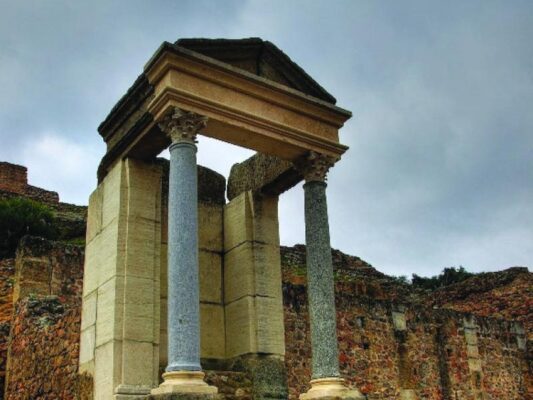

What to See at the Mulva-Munigua Site
Enjoy the Roman history from our holiday homes in Seville.
If you are passionate about history and you are looking for a different kind of getaway, our holiday homes in the Seville countryside are the perfect starting point. Enjoy the tranquillity of the countryside while exploring the rich Roman legacy that still survives in this region.
Whether you decide to stroll through the ruins of Italica, discover the mosaics of Casariche or explore the Roman remains in the heart of Seville, every corner has a story to tell.
Book now and live a unique experience, combining nature, culture, and history, and make your stay in the Seville countryside an unforgettable journey into the Roman past! 🏛️












